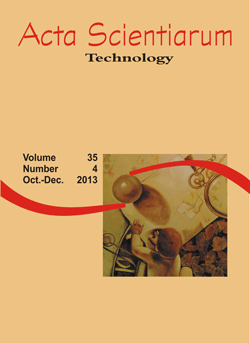<b>A comparative study between MFCC and LSF coefficients in automatic recognition of isolated digits pronounced in Portuguese and English</b> - doi: 10.4025/actascitechnol.v35i4.19825
DOI:
https://doi.org/10.4025/actascitechnol.v35i4.19825Keywords:
spoken digit recognition, mel-frequency cepstrum coefficients, line spectral frequencies.Abstract
Recognition of isolated spoken digits is the core procedure for a large number of applications which rely solely on speech for data exchange, as in telephone-based services, such as dialing, airline reservation, bank transaction and price quotation. Spoken digit recognition is generally a challenging task since the signals last for a short period of time and often some digits are acoustically very similar to other digits. The objective of this paper is to investigate the use of machine learning algorithms for spoken digit recognition and disclose the free availability of a database with digits pronounced in English and Portuguese to the scientific community. Since machine learning algorithms are fully dependent on predictive attributes to build precise classifiers, we believe that the most important task for successfully recognizing spoken digits is feature extraction. In this work, we show that Line Spectral Frequencies (LSF) provide a set of highly predictive coefficients. We evaluated our classifiers in different settings by altering the sampling rate to simulate low quality channels and varying the number of coefficients.
Â
Downloads
Downloads
Published
How to Cite
Issue
Section
License
DECLARATION OF ORIGINALITY AND COPYRIGHTS
I Declare that current article is original and has not been submitted for publication, in part or in whole, to any other national or international journal.
The copyrights belong exclusively to the authors. Published content is licensed under Creative Commons Attribution 4.0 (CC BY 4.0) guidelines, which allows sharing (copy and distribution of the material in any medium or format) and adaptation (remix, transform, and build upon the material) for any purpose, even commercially, under the terms of attribution.
Read this link for further information on how to use CC BY 4.0 properly.











8.png)




